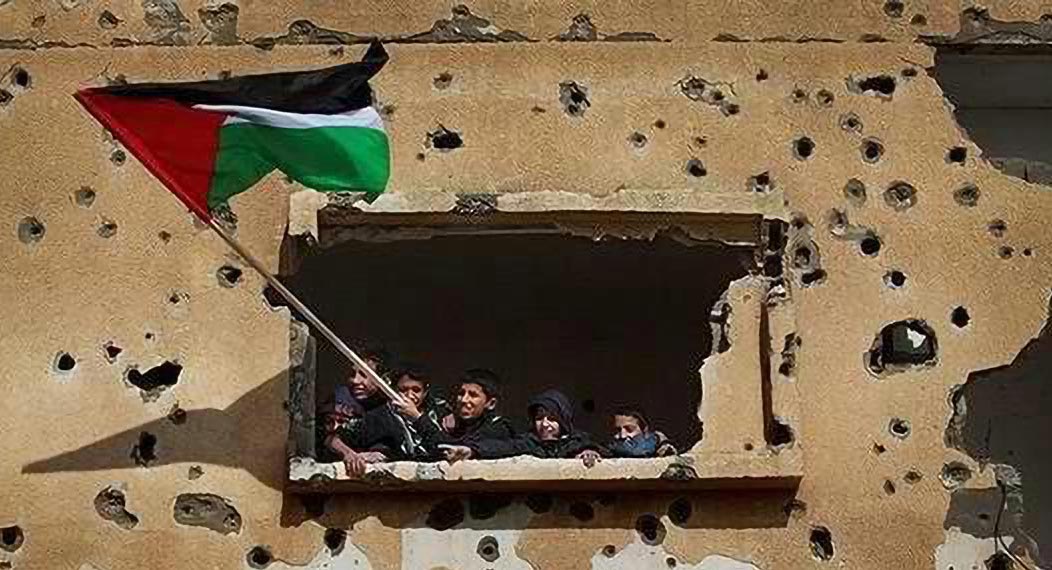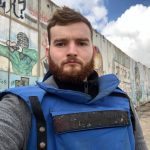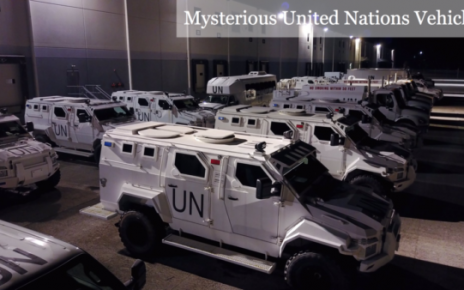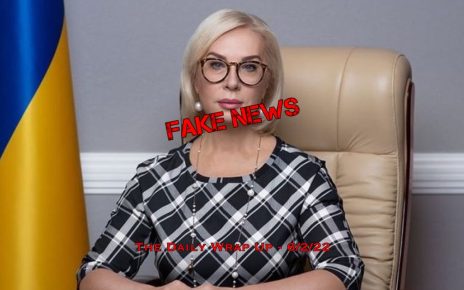Israel’s three day attack on the Gaza Strip, earlier this month, coupled with their ongoing crackdowns in the West Bank are aimed at beating down the spirit of young Palestinians who are starting a new uprising in the occupied territories. Despite Tel Aviv’s brutality, however, this strategy is destined to dramatically fail and the fallout will be more violent than was previously anticipated.
Palestinians, drained and fed up from living under what leading human rights groups have defined to be Apartheid, are rising up. Specifically in the occupied West Bank, we are now witnessing a revival of the armed struggle against Israel and although largely ineffective, so far, small armed cadres are frightening the Israeli military establishment.
What is Israel’s goal with its new military operations?
Simply put, Israel is trying to brutally beat down the spirit of the Palestinian people. In the month of August alone; Israel has murdered over 20 Palestinian children; attacked the Gaza Strip; raided and shut down 6 internationally trusted and backed Palestinian human rights organizations in the West Bank; assassinated Palestinian resistance fighters and brutally cracked down on demonstrators throughout East Jerusalem and the West Bank.
So far this year, Israel has murdered at least 135 Palestinians, the latest being a 58 year old, Salah Tawfiq Sawafta, who was attempting to take shelter in a bakery after leaving his local mosque and was shot in the head, by an Israeli soldier, at close range.
The telltale signs that Israel’s brutality was to be displayed on a greater scale this year, came with the amendment of the “open-fire” policy, in December 2021, which made it easier for Israeli soldiers to shoot to kill Palestinians. The policy now followed by the Israeli occupation forces operating in the West Bank is, in essence, shoot first, ask questions later. As we have seen with the case of veteran Al-Jazeera journalist, Shireen Abu Akleh, in May, being an Israeli soldier will also mean that the military and political establishment will even lie to cover up blatant war crimes. Israeli soldiers, according to their own rules, can shoot Palestinian rock throwers in their backs whilst they are running away and posing no imminent threat to the lives of Israeli forces. This includes in situations where Israeli occupation soldiers accompany violent settler extremists to attack Palestinian villages, to which Palestinians in their teens usually respond by throwing stones at the Israeli settlers carrying automatic weapons.
Why is the violence increasing now?
To answer this question, it requires delving into the history of the conflict a little. During what was known as the Al-Aqsa Intifada — the second large scale Palestinian uprising to take place in the occupied West Bank and Gaza Strip — Israel launched what was known as “operation defensive shield”. The second intifada, despite the majority of it consisting of non-violent protests, boycotts, and general strikes, was not like the first Intifada and involved Palestinian armed factions who inflicted heavy losses on the Israelis. The reason for the success of the Palestinian armed factions at the time was that there were many experienced commanders, fighters, and strategists in guerrilla warfare who were taking part in the fight against the Israeli occupation.
What were known as the Oslo Accords, signed between 1993-1995, set up the Palestinian Liberation Organization (PLO) into isolated enclaves, where they would retain limited security and civil control over Palestinians in the West Bank and Gaza. The PLO had previously (since its creation in the 1960s) been labelled as a terrorist organization by Israel and was the organization under which most Palestinian resistance movements congregated. The PLO had also never had real allocated power or a legitimized presence inside of occupied Palestine itself, instead battling Israel from neighboring Arab countries.
After Israel forced the PLO to leave its main base of operations in Lebanon, in 1982, brutally massacring over 20,000 people in the process, the Palestinians in the West Bank, East Jerusalem and Gaza felt isolated. A number of local resistance groups had formed since then and strengthened their presence in the territories during the 1980s, and by 1987, when it was reported that Israeli forces had caused another road accident purposefully, killing a number of Palestinians from the Jabalia refugee camp in Gaza, the people rose up. First from Jabalia refugee camp and then all of the Gaza Strip, suddenly everyone was on the streets to create what was known as ‘The Intifada’.
The intifada was a disaster for Israel’s economy, its military, its international image, and proved extremely effective at pressuring Tel Aviv. The PLO, which did not cause the Intifada, or lead it at the start, got involved and used the revolt to its own advantage. However, the PLO was also weak and had just lost its most wealthy donor, Kuwait, in addition to being unable to launch significant attacks on Israel, never recovering from the defeat of 1982. Tel Aviv needed a way out, so it sought the best possible option to restore its international prestige, to strengthen its economy and take its forces out of the most densely populated areas in the West Bank and Gaza. It signed the Oslo Accords, which effectively ended the Palestinian revolt.
Oslo was supposed to result in an agreement that would create a “two-State” solution, where Palestinians would have their own State and finally rid themselves of Israeli occupation. The so-called “two-State solution” was, however, a lie, Israel never intended to allow Palestinians to create a viable State on roughly 22% of their homeland. Israel instead sought to end the uprising and to have Palestinian security forces deal with Palestinians inside isolated enclaves in both Gaza and the West Bank. In the year 2000, after the Israeli opposition leader, at the time, Ariel Sharon, stormed al-Aqsa mosque, Palestinians had enough and relaunched the intifada.
At that time, under the control of PLO President, Yasser Arafat, Palestinian armed groups were strong and newly created PA forces were even ordered to open fire on Israeli raiding forces. Israel countered with a number of military operations, the most destructive of which was “operation defensive shield”, which sought to crush the armed groups in the West Bank. From the launch of this brutal military crackdown in 2002, until 2007, Israel smashed many of the Palestinian armed factions. Yasser Arafat, who had backed the Al-Aqsa Intifada, died whilst besieged and, according to Al-Jazeera’s investigative work, was poisoned. Then came the era of the new PA President, Mahmoud Abbas, who had been appointed Prime Minister before Yasser Arafat’s death. It was the US Government that had pressured Arafat to appoint someone as a PM, a position which did not exist prior to US intervention. When Abbas arrived in power, the US sought to re-invent the Palestinian Authority security forces, to ensure they could never work as a resistance force against Israel again. The US created programs under which they re-structured the PA into a “security coordination” force that was to be trained and armed by Jordan, the US, and EU.
PA President Abbas also signed a deal to rid the West Bank of the majority of the remaining resistance fighters in the West Bank, many of them joining the PA security forces and agreeing to end the escalation with Israel. Most of the experienced fighters and commanders were either dead or in jail at this point.
The brutality of the Israeli military operations, combined with the collaboration of the PA leadership completely crushed the armed struggle in the West Bank. Ever since 2007, there had been no sign of any armed rebellion, until 2021. Again frustrated, a new generation — even more deprived of their rights, discriminated against, and persecuted under occupation their entire lives, many remembering the horrors of the second intifada from their childhoods — had had enough. With the tens of thousands massacred in their life times, all of them having either lost a family member to Israeli violence or had one tortured, or both, the young generation were boiling with rage against their occupiers.
In May of 2021, the Palestinian resistance factions in Gaza led a successful military campaign against Israel, in which all Palestinians — even those with Israeli citizenship who had long remained largely silent — rose up. It was called the battle of “Saif al-Quds”, “the sword of Jerusalem” in english. After the Palestinian Holy Sites of the Christians and Muslims alike were desecrated during both the Holy Month of Ramadan and Orthodox Christian Easter, the armed factions in Gaza from across the political spectrum unified and launched a joint offensive, whilst the rest of Palestine revolted.
After this, the Palestinians of the West Bank began announcing new armed factions throughout 2021, the most prominent of which has been the “Jenin brigades”. This year, in Nablus, Bethlehem, Tulkarem, and elsewhere, more and more groups have began launching shooting attacks at Israeli military sites, in addition to some attacks on the illegal settlements. The more Israel kills, the more young people join. Most of the fighters range from around 17 to 25 years old, they have next to no experience and only access to a limited arsenal of guns, sometimes creating ineffective explosive devises. They are desperate to resist, by any means necessary, they have had enough and don’t care if they meet death, because this will immortalize them as martyrs. These are the caged children who witnessed their entire world flipped on its heads, who are grandchildren of the ethnically cleansed and the children of those who were either killed or witnessed their refugee camps torn to shreds.
Israel’s strategy is to try and strengthen their PA collaborator force, whose intelligence wing is connected to the Mossad and CIA, hoping that they will be able to help crush the growing unrest. One of the reasons for the attack on Gaza was to try and undo the victory that Palestinians claimed in May 2021, then following it up by murdering leading icons of the West Bank armed resistance. Now, Israel is going after the human rights groups, why? Because they don’t want their human rights abuses properly investigated and submitted to the international community by reputable organizations.
However, this is one thing that the Israelis don’t understand. The Palestinians will never stop their revolution due to Israel’s strategy of employing the language of violence. Only the occupier hears the language of force as a message to stop their crimes. Every time they kill one generation of Palestinians, the next only rise stronger and more driven to end the settler colonial project which oppresses them. Israel can no longer kill the commanders of the armed groups in the West Bank, because there are no true commanders, this is a people’s war and this is the first stage in a new armed awakening that will shake Israel to its very core. The armed groups are weak now, untrained, not well equipped, and don’t have coherent strategies to employ, but despite this, they grow more and more confident. The Israelis have only to stand in front of a mirror if they wish to see who will be deterred by the language of force. Israel calls these young Palestinian resistance fighters terrorists, monsters, refusing to confront who made them into what they are in the first place.





